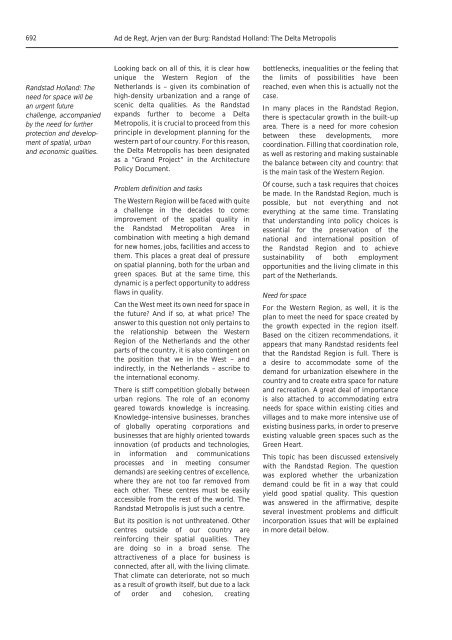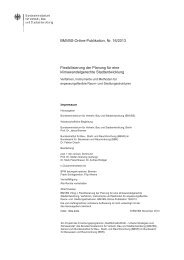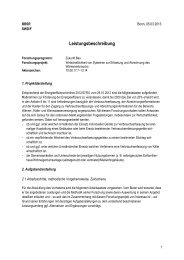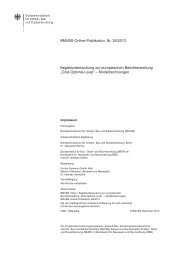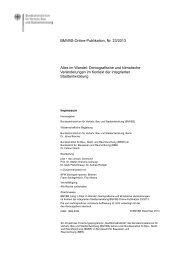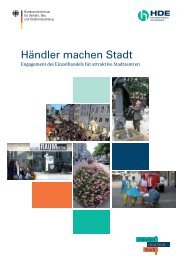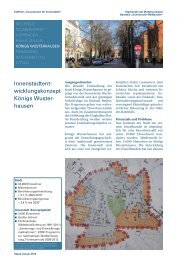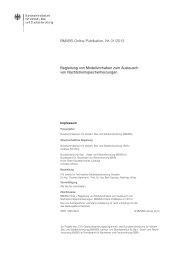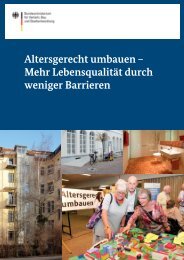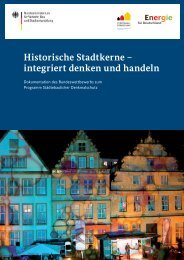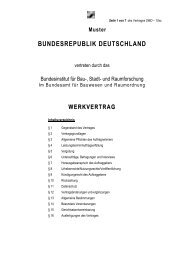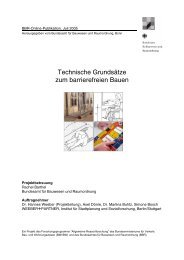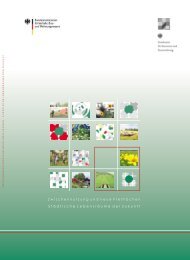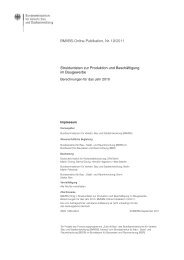Download (PDF, 1MB, Not barrier-free file.)
Download (PDF, 1MB, Not barrier-free file.)
Download (PDF, 1MB, Not barrier-free file.)
Create successful ePaper yourself
Turn your PDF publications into a flip-book with our unique Google optimized e-Paper software.
692Ad de Regt, Arjen van der Burg: Randstad Holland: The Delta MetropolisRandstad Holland: Theneed for space will bean urgent futurechallenge, accompaniedby the need for furtherprotection and developmentof spatial, urbanand economic qualities.Looking back on all of this, it is clear howunique the Western Region of theNetherlands is – given its combination ofhigh-density urbanization and a range ofscenic delta qualities. As the Randstadexpands further to become a DeltaMetropolis, it is crucial to proceed from thisprinciple in development planning for thewestern part of our country. For this reason,the Delta Metropolis has been designatedas a “Grand Project” in the ArchitecturePolicy Document.Problem definition and tasksThe Western Region will be faced with quitea challenge in the decades to come:improvement of the spatial quality inthe Randstad Metropolitan Area incombination with meeting a high demandfor new homes, jobs, facilities and access tothem. This places a great deal of pressureon spatial planning, both for the urban andgreen spaces. But at the same time, thisdynamic is a perfect opportunity to addressflaws in quality.Can the West meet its own need for space inthe future? And if so, at what price? Theanswer to this question not only pertains tothe relationship between the WesternRegion of the Netherlands and the otherparts of the country, it is also contingent onthe position that we in the West – andindirectly, in the Netherlands – ascribe tothe international economy.There is stiff competition globally betweenurban regions. The role of an economygeared towards knowledge is increasing.Knowledge-intensive businesses, branchesof globally operating corporations andbusinesses that are highly oriented towardsinnovation (of products and technologies,in information and communicationsprocesses and in meeting consumerdemands) are seeking centres of excellence,where they are not too far removed fromeach other. These centres must be easilyaccessible from the rest of the world. TheRandstad Metropolis is just such a centre.But its position is not unthreatened. Othercentres outside of our country arereinforcing their spatial qualities. Theyare doing so in a broad sense. Theattractiveness of a place for business isconnected, after all, with the living climate.That climate can deteriorate, not so muchas a result of growth itself, but due to a lackof order and cohesion, creatingbottlenecks, inequalities or the feeling thatthe limits of possibilities have beenreached, even when this is actually not thecase.In many places in the Randstad Region,there is spectacular growth in the built-uparea. There is a need for more cohesionbetween these developments, morecoordination. Filling that coordination role,as well as restoring and making sustainablethe balance between city and country: thatis the main task of the Western Region.Of course, such a task requires that choicesbe made. In the Randstad Region, much ispossible, but not everything and noteverything at the same time. Translatingthat understanding into policy choices isessential for the preservation of thenational and international position ofthe Randstad Region and to achievesustainability of both employmentopportunities and the living climate in thispart of the Netherlands.Need for spaceFor the Western Region, as well, it is theplan to meet the need for space created bythe growth expected in the region itself.Based on the citizen recommendations, itappears that many Randstad residents feelthat the Randstad Region is full. There isa desire to accommodate some of thedemand for urbanization elsewhere in thecountry and to create extra space for natureand recreation. A great deal of importanceis also attached to accommodating extraneeds for space within existing cities andvillages and to make more intensive use ofexisting business parks, in order to preserveexisting valuable green spaces such as theGreen Heart.This topic has been discussed extensivelywith the Randstad Region. The questionwas explored whether the urbanizationdemand could be fit in a way that couldyield good spatial quality. This questionwas answered in the affirmative, despiteseveral investment problems and difficultincorporation issues that will be explainedin more detail below.


